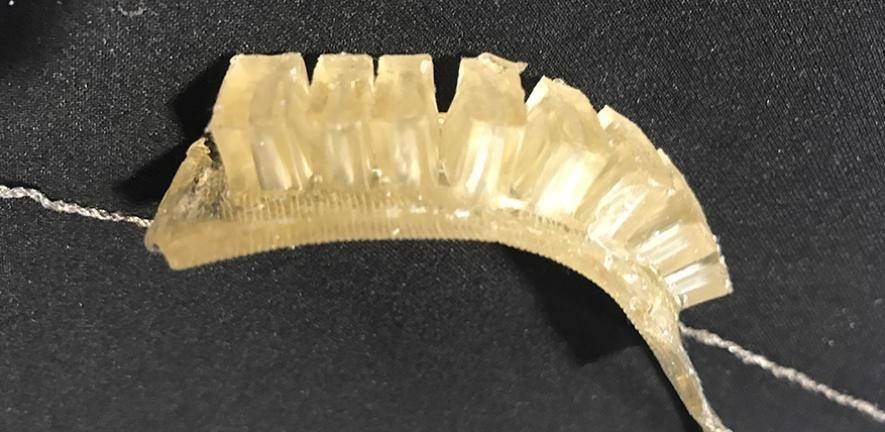Scientists have engineered biodegradable, self-healing, 3D-printed materials that could be employed in the creation of lifelike artificial hands and other soft robotics applications.

Image Credit: ©University of Cambridge.
The economical jelly-like materials, created by scientists at the University of Cambridge, can sense temperature, strain and humidity. Moreover, in contrast to preceding self-healing robots, they can also repair themselves to some extent at room temperature.
The results of the study can be found in the journal NPG Asia Materials.
Soft sensing technologies could revolutionize robotics, wearable devices and tactile interfaces among other applications. However, the majority of soft sensing technologies are not durable and use up a large quantity of energy.
Incorporating soft sensors into robotics allows us to get a lot more information from them, like how strain on our muscles allows our brains to get information about the state of our bodies.
David Hardman, Study First Author, Department of Engineering, University of Cambridge
As part of the EU-sponsored SHERO project, Hardman and his colleagues have been involved in engineering soft materials that are sensing and self-healing for robotic arms and hands. These materials can sense when they are impaired, take the needed steps to provisionally heal themselves, and then restart work — all without manual intervention.
We’ve been working with self-healing materials for several years, but now we’re looking into faster and cheaper ways to make self-healing robots.
Dr. Thomas George-Thuruthel, Study Co-Author, Department of Engineering, University of Cambridge
Previous models of the self-healing robots had to be heated so as to heal, but the Cambridge scientists are currently creating materials that can heal at ambient temperature, which would make them more beneficial for practical applications.
We started with a stretchy, gelatine-based material which is cheap, biodegradable and biocompatible and carried out different tests on how to incorporate sensors into the material by adding in lots of conductive components.
David Hardman, Study First Author, Department of Engineering, University of Cambridge
The scientists discovered that printing sensors comprising sodium chloride — salt — rather than carbon ink resulted in a material with the properties they were aiming for. Since salt is soluble in the water-filled hydrogel, it offers an even channel for ionic conduction — the transport of ions.
When calculating the electrical resistance of the printed materials, the scientists learned that variations in strain resulted in a very linear response, which they could utilize to assess the material’s deformations.
Incorporating salt also facilitated sensing of stretches of over three times the sensor’s original length, so that the material can be added into versatile and stretchable robotic devices.
The self-healing materials are inexpensive and easy to manufacture, either by casting or 3D printing. They are superior to many current alternatives since they exhibit long-lasting strength and stability without drying out, and they are made completely from extensively available, food-safe, materials.
“It’s a really good sensor considering how cheap and easy it is to make,” said George-Thuruthel. “We could make a whole robot out of gelatine and print the sensors wherever we need them.”
The self-healing hydrogels adhere well to a variety of different materials, meaning they can effortlessly be added with other types of robotics. For example, much of the study in the Bio-Inspired Robotics Laboratory, where the scientists are based, is concentrated on the creation of artificial hands.
Even though this material is a proof-of-concept, if advanced further, it could be added into artificial skins and personalized wearable and biodegradable sensors.
This study received support from the Self-HEaling soft RObotics (SHERO) project, funded under the Future and Emerging Technologies (FET) program of the European Commission.
Journal Reference:
Hardman, D., et al. (2022) Self-healing ionic gelatin/glycerol hydrogels for strain sensing applications. NPG Asia Materials. doi.org/10.1038/s41427-022-00357-9.